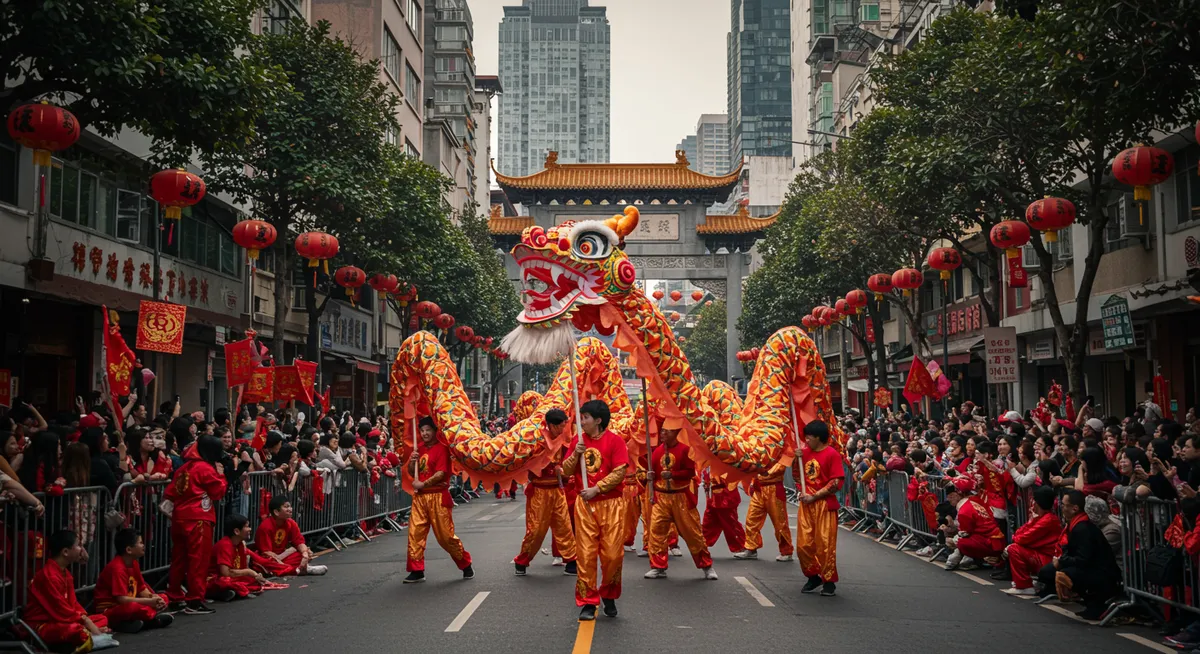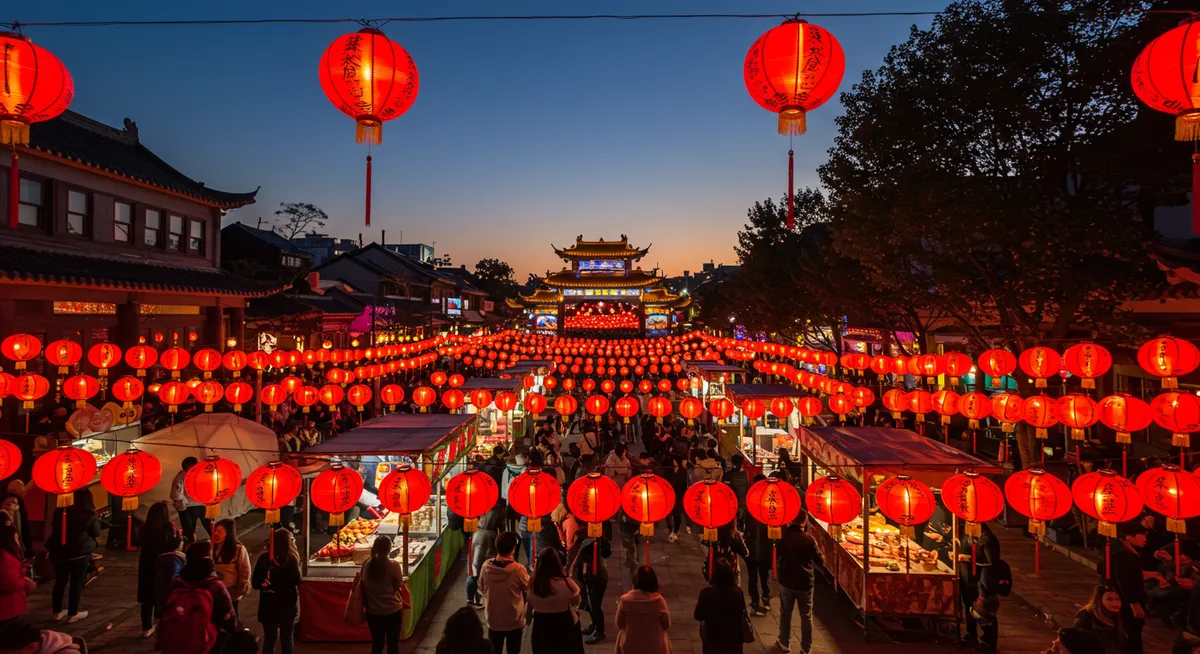Lunar New Year Festival Guide | Spring Festival, Seollal & Tết Celebrations

Lunar New Year: Asia's Most Significant Cultural Celebration
Each year, billions of people across East and Southeast Asia participate in the world's largest annual migration as families reunite to celebrate Lunar New Year. Known by different names across the region—Spring Festival in China, Seollal in Korea, and Tết in Vietnam—this ancient celebration marks the beginning of the lunisolar calendar with intricate rituals, symbolic foods, and family gatherings designed to ensure prosperity in the coming year. This guide explores the rich diversity of Lunar New Year traditions across Asia, providing cultural context and practical information for experiencing this extraordinary cultural phenomenon.

The Cultural Significance of Lunar New Year
As Asia's most significant cultural holiday, Lunar New Year reflects several foundational aspects of East Asian cultural identity:
- Family Continuity: The emphasis on intergenerational gatherings reinforces family bonds and ancestral connections
- Cyclical Time: The celebration marks the lunar calendar's cycle, connecting modern societies with ancient agricultural patterns
- Cultural Symbolism: Animals of the zodiac, lucky colors, and symbolic objects create rich layers of meaning
- Ritual Renewal: House cleaning, debt settlement, and resolution of conflicts represent the clearing away of the old year
Regional Lunar New Year Traditions
While sharing common elements, Lunar New Year celebrations express distinctive regional and cultural variations:
China's Spring Festival (春节 - Chūnjié)
As the world's largest annual celebration, China's Spring Festival brings the nation to a standstill for a week of family reunions and traditions:
- Chunyun: The world's largest annual human migration as hundreds of millions travel home for family reunions
- Red Packets (红包 - Hóngbāo): Elders give red envelopes containing money to children for good luck
- Door Couplets (春联 - Chūnlián): Red paper banners with poetic couplets expressing wishes for the new year
- Lion and Dragon Dances: Vibrant public performances believed to bring good fortune to communities
- Regional Variations: Northern dumplings, southern tangyuan (sweet rice balls), and distinctive local customs

Korea's Seollal (설날)
Korea's three-day celebration emphasizes formal family rituals and respect for ancestors:
- Sebae (세배): Formal bowing ceremony where younger family members honor elders and receive blessings
- Charye (차례): Ancestral memorial ritual with carefully arranged food offerings
- Tteokguk (떡국): Rice cake soup traditionally consumed to gain one year of age
- Folk Games: Traditional activities like yut nori (stick game) and kite flying bring families together
Vietnam's Tết Nguyên Đán
Vietnam's most important holiday combines Chinese influences with distinctive Vietnamese traditions:
- Cây Nêu: Ritual bamboo pole erected to ward off evil spirits during the celebration
- Bánh Chưng: Square glutinous rice cakes wrapped in banana leaves symbolizing earth
- Hoa Mai and Hoa Đào: Yellow apricot blossoms (South) and pink peach blossoms (North) as home decorations
- First Visitor: The xông nhà tradition where the first person to enter a home sets the tone for the year
Lunar New Year in Other Regions
The celebration extends beyond East Asia with distinctive variations:
- Singapore and Malaysia: Multicultural celebrations with yusheng prosperity toss salad and open houses
- Philippines' Chinese New Year: Influence of the significant Chinese diaspora community
- Tibetan Losar: Buddhist-influenced celebration with monastery rituals and butter sculptures
- Global Diaspora Communities: Chinatowns worldwide host parades, performances, and cultural festivals
The Fifteen-Day Festival Cycle
Traditional Lunar New Year celebrations follow a fifteen-day structure, though modern observances are often shortened:
- New Year's Eve: Family reunion dinner (团年饭 - tuánniánfàn) as the celebration's emotional centerpiece
- First Five Days: Family visits, ancestral worship, and welcoming the gods of wealth
- Seventh Day: "Everyone's Birthday" (人日 - rénrì) celebrating the creation of humanity
- Fifteenth Day: Lantern Festival (元宵节 - Yuánxiāo Jié) marking the first full moon with lanterns and sweet rice balls
Lunar New Year Symbols and Meanings
The celebration incorporates rich symbolism expressing hopes for the coming year:
- Zodiac Animals: The rotating 12-year cycle of animals influences fortune, compatibility, and character traits
- Lucky Colors: Red dominates as the color of good fortune, with gold representing prosperity
- Symbolic Foods: Dishes chosen for their auspicious meanings through wordplay and appearance
- Spring Couplets: Poetic expressions of hope and good wishes for the new year
- Lucky Plants: Kumquat trees, peach blossoms, and bamboo arranged for good fortune

Experiencing Lunar New Year as a Visitor
For travelers, Lunar New Year offers extraordinary cultural immersion opportunities:
Best Destinations for Lunar New Year
Each country and region offers distinctive celebration styles:
- Hong Kong: Spectacular public festivities including night parade, fireworks, and accessible temple visits
- Taipei: Elaborate lantern festivals and midnight temple ceremonies
- Singapore: Multicultural celebrations with Chinese, Malay, and Indian influences
- Seoul: Traditional folk village celebrations alongside modern urban events
- Hoi An, Vietnam: Ancient town transformed with lanterns, flowers, and traditional performances
Visitor Guidelines
Travelers should consider several factors when planning a Lunar New Year visit:
- Transportation Challenges: Book accommodations and transportation months in advance due to massive travel demand
- Business Closures: Many small businesses, restaurants, and attractions close for multiple days
- Appropriate Gifting: Understand taboos and customs if visiting homes or participating in family events
- Respecting Traditions: Learn about key customs to avoid cultural misunderstandings
Lunar New Year in the Modern Age
Contemporary celebrations blend ancient traditions with modern expressions:
- Digital Red Packets: Mobile payment platforms enable virtual hongbao giving
- Global Television Galas: China's Spring Festival Gala attracts billions of viewers worldwide
- Urban Celebrations: City governments organize elaborate light shows and public events
- Cultural Revival: Young generations embracing and reinterpreting traditional elements
Planning a Lunar New Year visit?
Check destination-specific calendars as dates change annually based on the lunar calendar. The celebration typically falls between late January and mid-February.
Consider visiting temple fairs in Beijing, lantern festivals in Taiwan, or flower markets in Hong Kong for authentic local experiences.
Explore Related Asian Festivals
If you're interested in Lunar New Year celebrations, you might also enjoy these related cultural festivals across Asia:
Mid-Autumn Festival
East Asia's harvest moon celebration with mooncakes, lanterns, and family gatherings.
Dragon Boat Festival
Commemorate the ancient poet Qu Yuan with exciting boat races and sticky rice dumplings.
Dongzhi Festival
Winter solstice celebration with tangyuan dumplings and family gatherings across East Asia.
Diwali
India's festival of lights celebrating the triumph of light over darkness.
Thaipusam
Hindu festival of faith, endurance and penance celebrated by Tamil communities.
Ghost Festival
Ancestral remembrance with offerings, lanterns, and ceremonies across East Asia.
Discover how Lunar New Year connects with other Asian celebrations through shared cultural elements. The Mid-Autumn Festival represents another major lunar calendar celebration, while other regional festivals showcase Asia's extraordinary cultural diversity.